Paulownia tree is called “Odong namu” in Korean 오동나무. Paulownia coreana, grows primarily in East Asia, with the southern region of Gyeonggi Province in Korea, including Seoul, being a notable area for its growth. Throughout history, it has been highly regarded for its exceptional wood quality and has been a preferred material for crafting furniture.
Paulownia wood exhibits a natural, pristine white color and is exceptionally lightweight. It possesses a consistently attractive grain pattern and emits a subtle, appealing sheen. Notably, it is resilient to moisture, resisting warping or distortion. Furthermore, it demonstrates resistance to fire, burning with difficulty, and boasts outstanding insect-repellent properties.

As a result, paulownia wood boasts numerous advantages and found widespread use during the Joseon Dynasty, particularly in crafting high-quality furniture and musical instruments like the “Gayageum.” Due to its lightweight nature and resistance to insects, it was a preferred choice for constructing drawers in medicine chests and clothing storage units.
Nonetheless, its softness makes it susceptible to staining and scratching. Various methods exist for preserving wood, ranging from applying natural oils to using lacquers, or simply allowing the wood to age gracefully over time.
An alternative technique for preserving wood while imparting a distinctive appearance is known as “Nakdong.” This ancient wood treatment process involves the application of heat. The method entails removing the soft wood fibers by rubbing the wood’s surface with rice straw and burning it, leaving behind only the hard grain. When applied to paulownia wood, this process reveals a rich, dark brownish-black color, enhancing the wood’s beautiful grain. The treated surface is then coated with natural oil. This technique enhances the wood’s resistance to fire, insects, and fungal damage. It is akin to the Japanese practice known as “shou sugi ban” (焼杉板), primarily employed on cedar wood, which has been in use in Japan since the 18th century.
The “Nakdong” process has three steps:
- Charring: The wood is treated by applying an iron heated in a kiln over 1000°C. until it chars. Because it is difficult to treat all parts of the wood equally with the flame, certain parts of the wood will be darker than other parts.
- Cleaning: After the wood has cooled down, it is brushed and scraped to remove some of the more pronounced areas of the charring and to even out the coloration.
- Coating: The wood is treated with mineral oil such as perilla oil, or other natural oils to seal in the charred wood and to offer further protection. When finished, the wood has a rich, lustrous black tone.
LINK: NAKDONG METHOD.
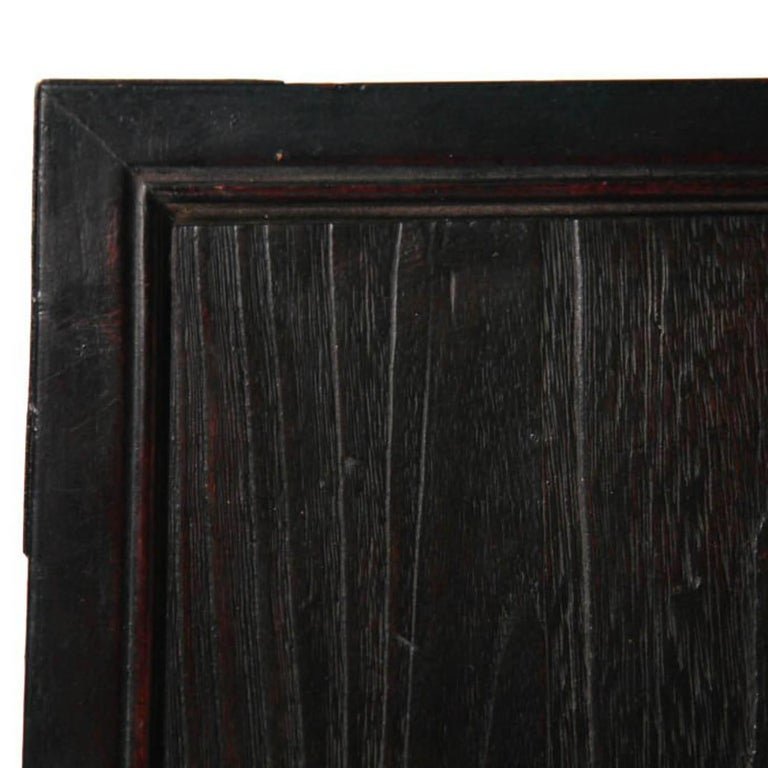
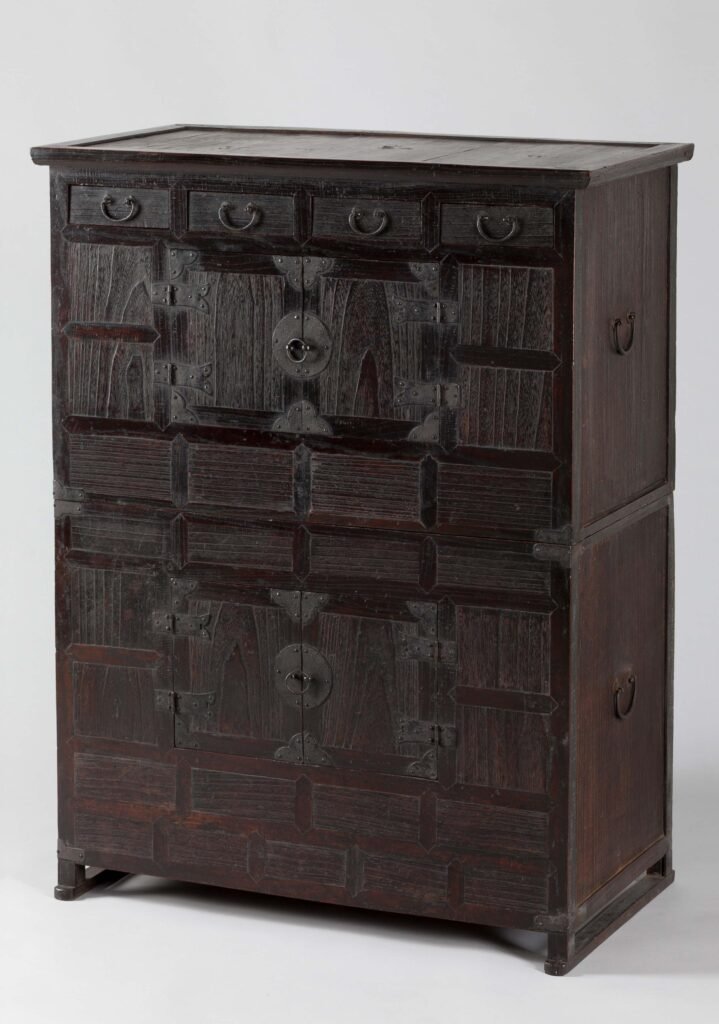
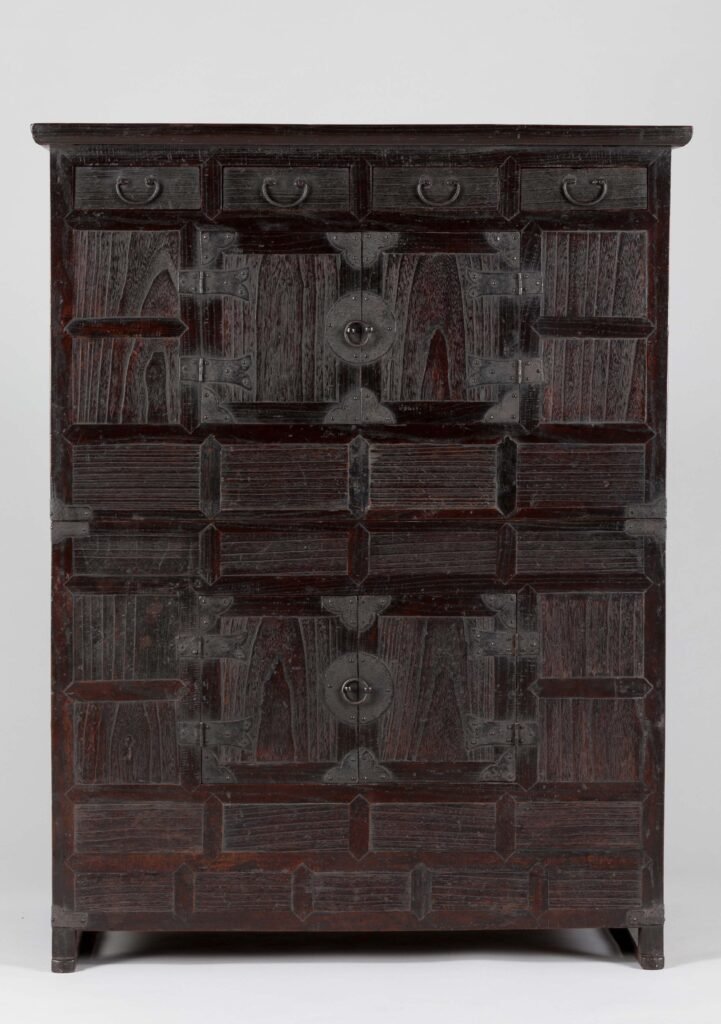

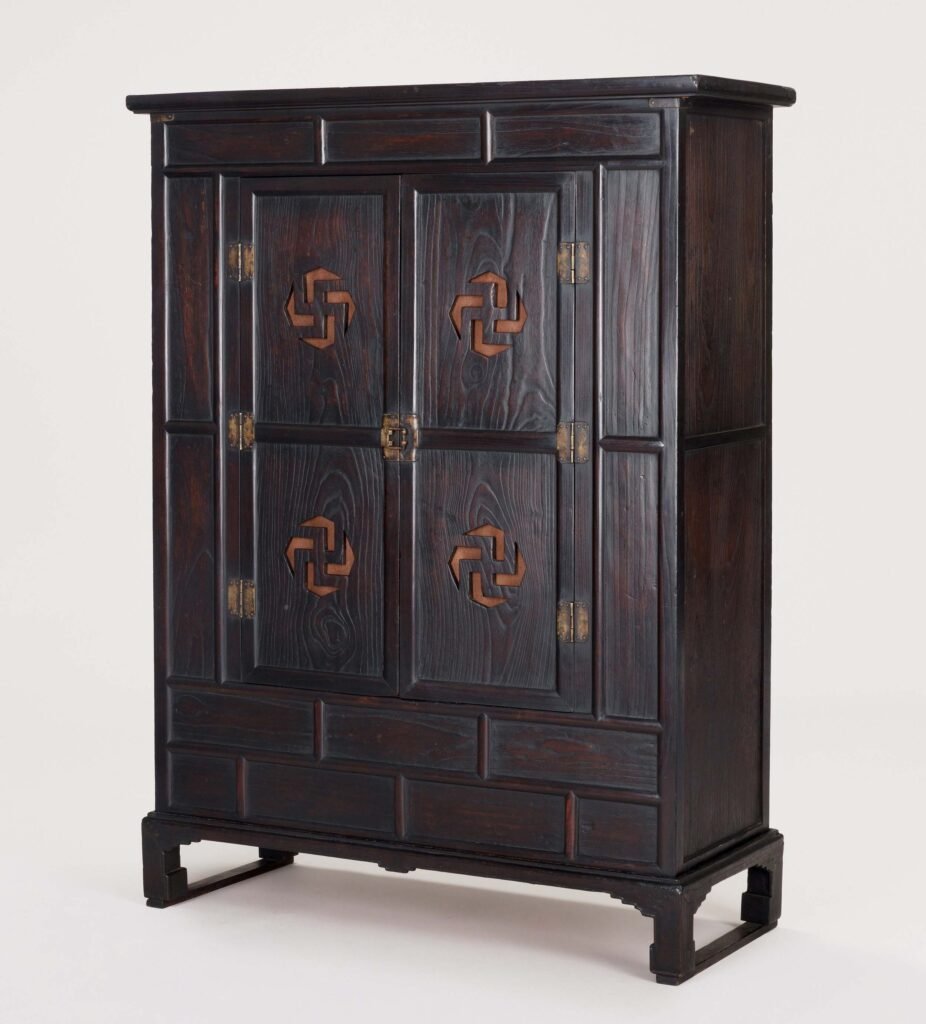

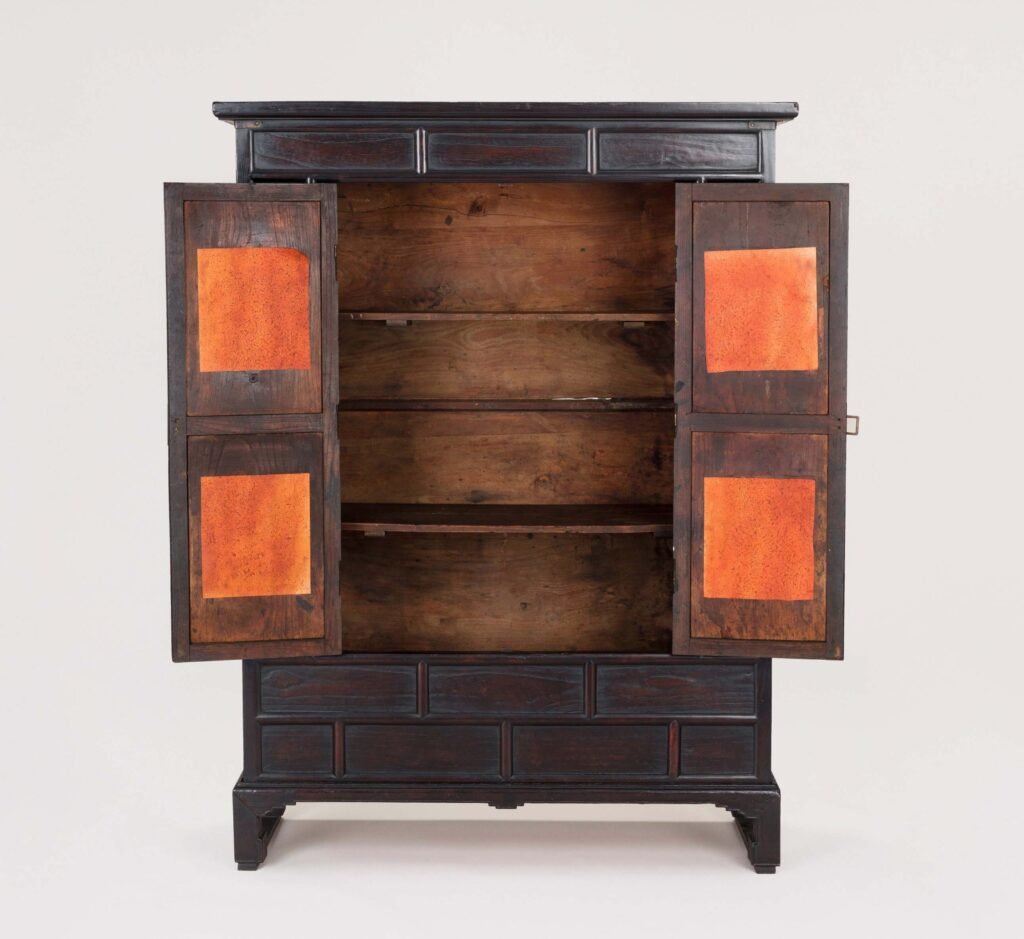
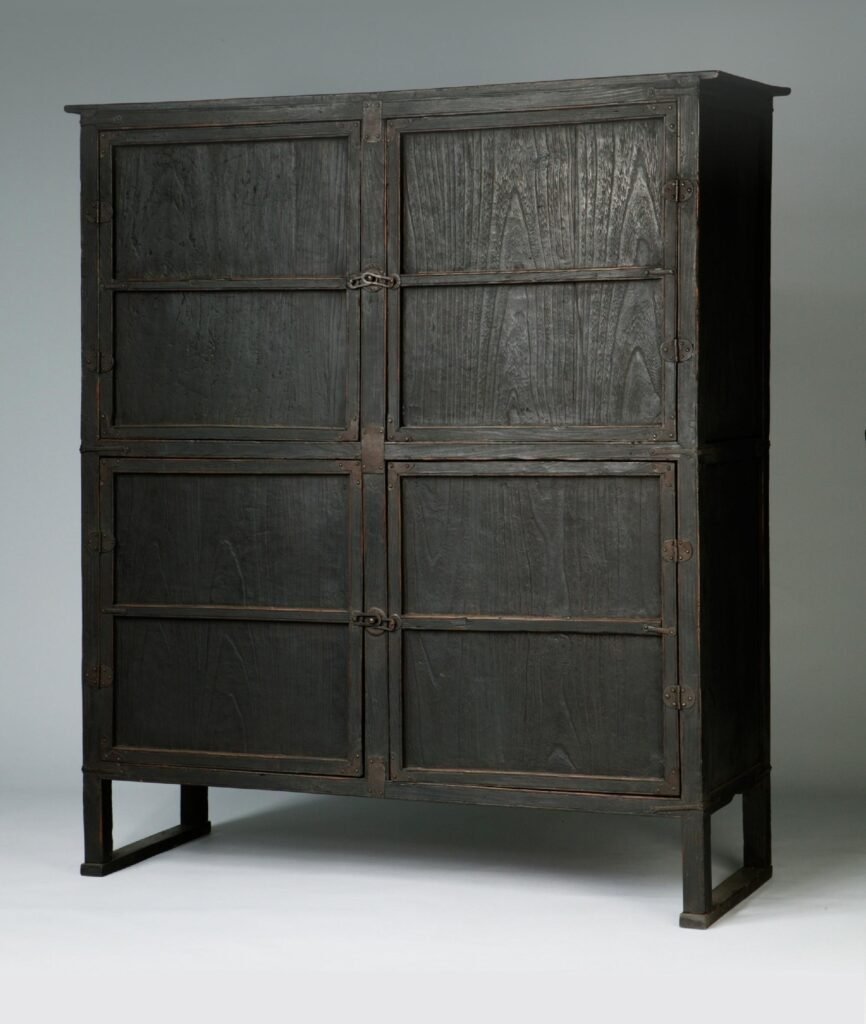
This large piece of furniture was built with paulownia wood that had first been charred to achieve the desired dark hue.
Paulownia was also called ”marriage tree” because it was used for making wedding items (chests or boxes) for the future wife. Paulownia trees grows fast up to 3 meters per year. In Korea, there was a custom of planting a few paulownia trees when a daughter was born. It is said that when the daughter grew up and was ready to follow her husband, the tree was cut down to build her furniture. This technique has been used on all the furniture displayed hereunder. The wood is dark in color. However when paulownia was used for hidden part such as drawers construction it was left in its original condition revealing it’s pale color.
FURNITURE MADE OF PAULOWNIA
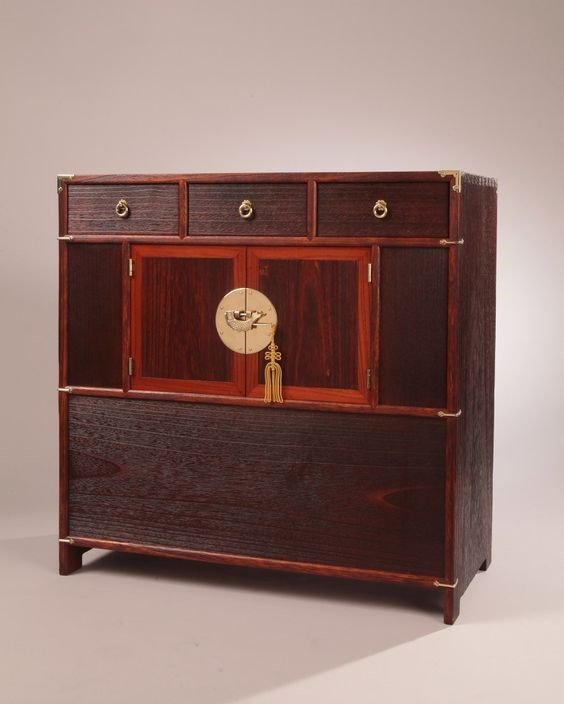
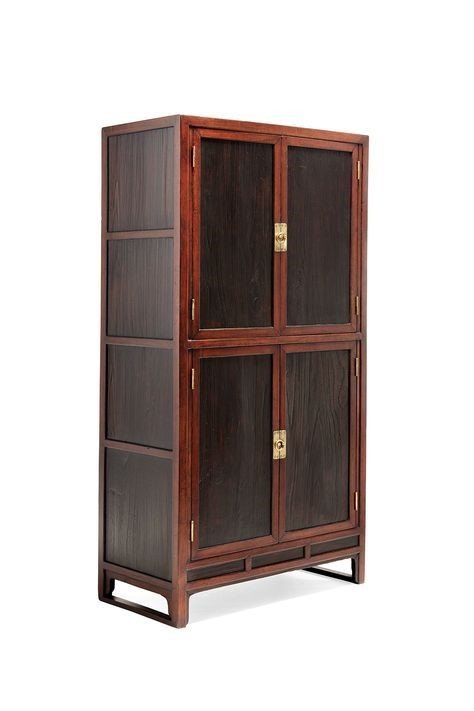
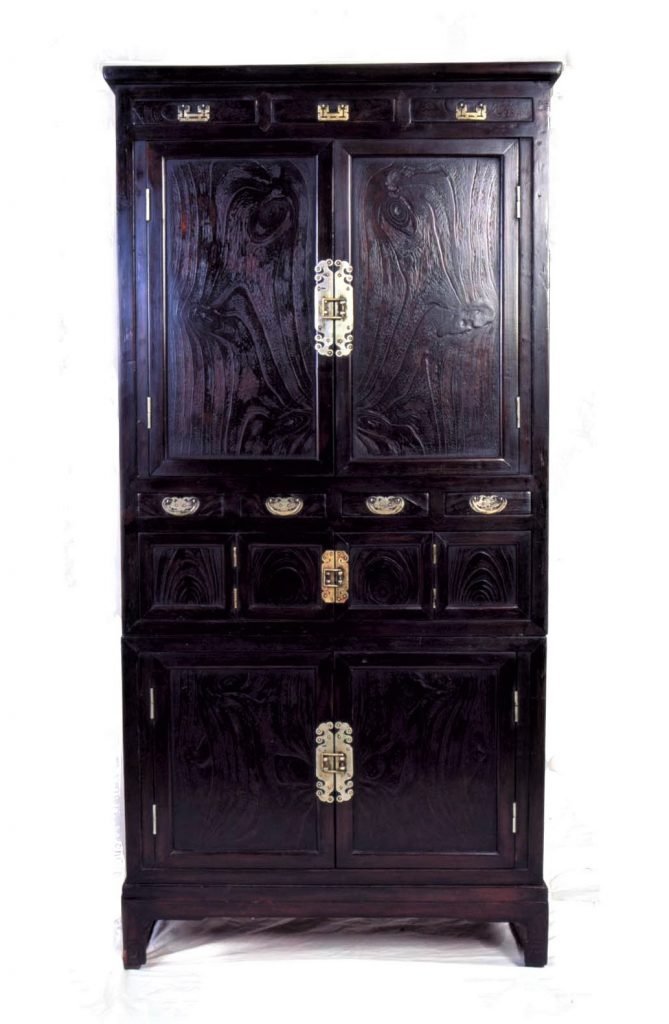
Pine & paulownia wood, white brass fittings.
H. 184cm, W. 86cm, D. 43cm. Early 20th century.
Gyeonggi province, Korea. Collection: “ANTIKASIA“
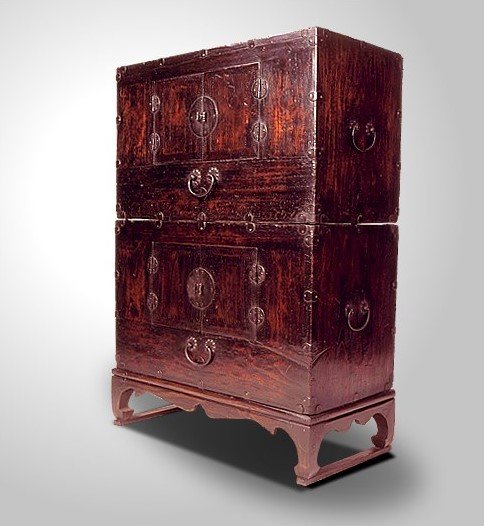
Two units stacked chest, Paulownia wood, iron fittings. Oil finish. Legs restored. Mid 19th century. Gyeonggi province.
H. 112cm, W. 77cm, D. 39cm. Collection “ANTIKASIA“
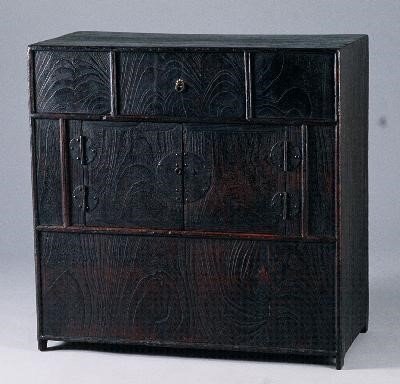
Collection: National Museum of Korea. Seoul.
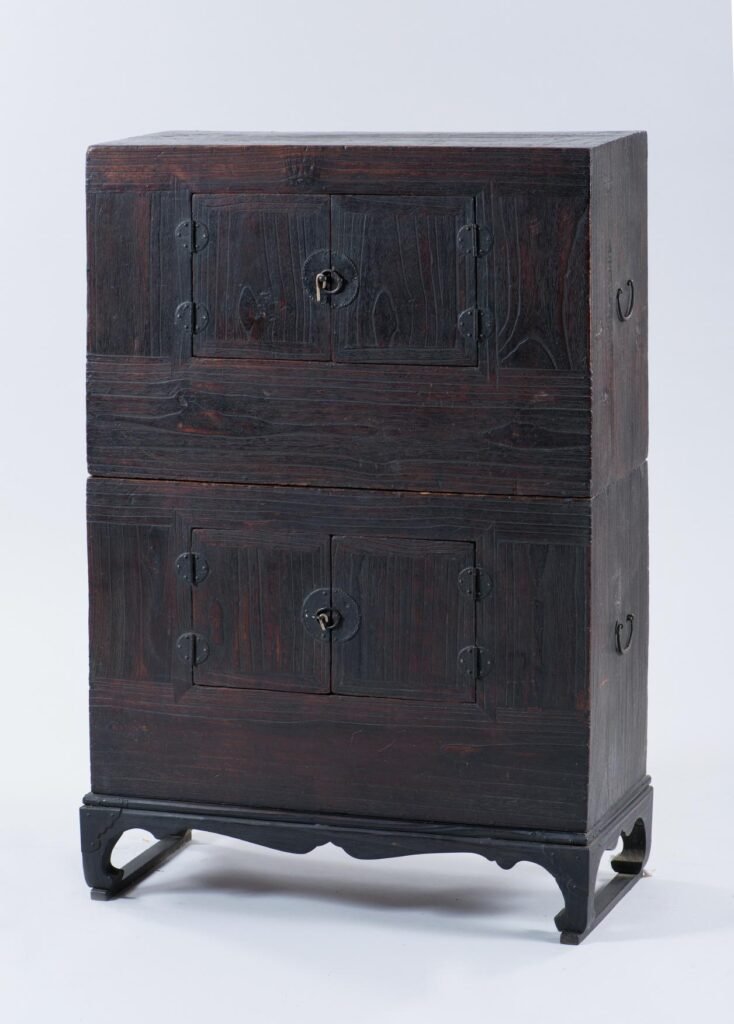
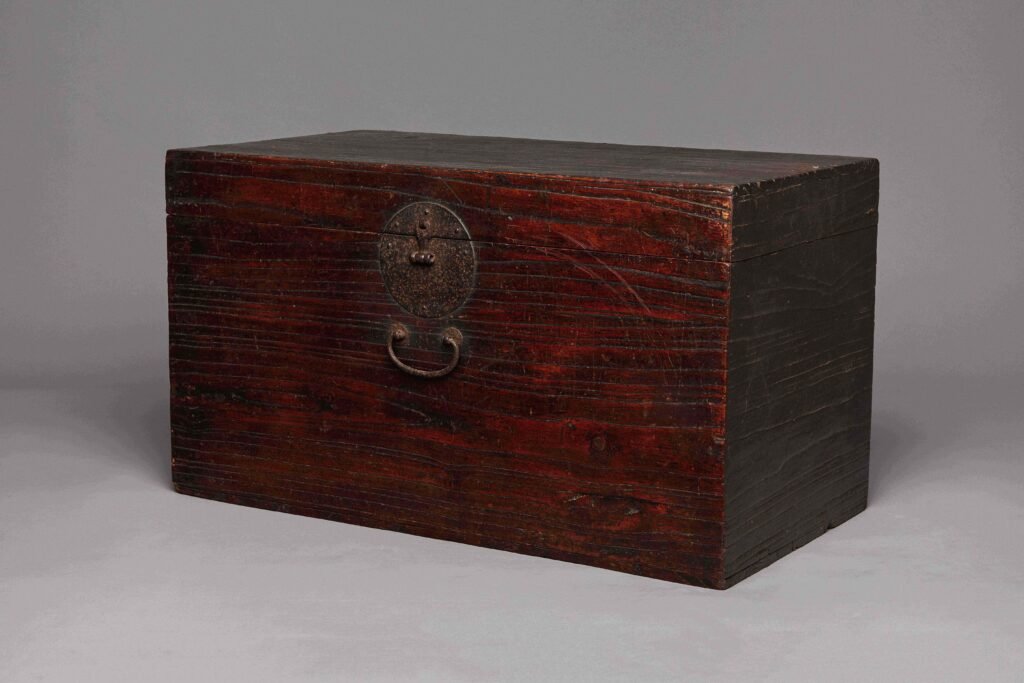
H. 39cm, W. 69cm, D. 36,5cm.
Collection: Cheonan Museum, Gyeonggi Do province.

Due to its limited shock resistance, paulownia wood was primarily utilized in crafting light furniture (known as “nong”), as well as for constructing the sides of multi-storey furniture and boxes. It was seldom selected for bandaji, which demanded dense and highly durable wood. Nevertheless, we have discovered scarce instances of such furniture.
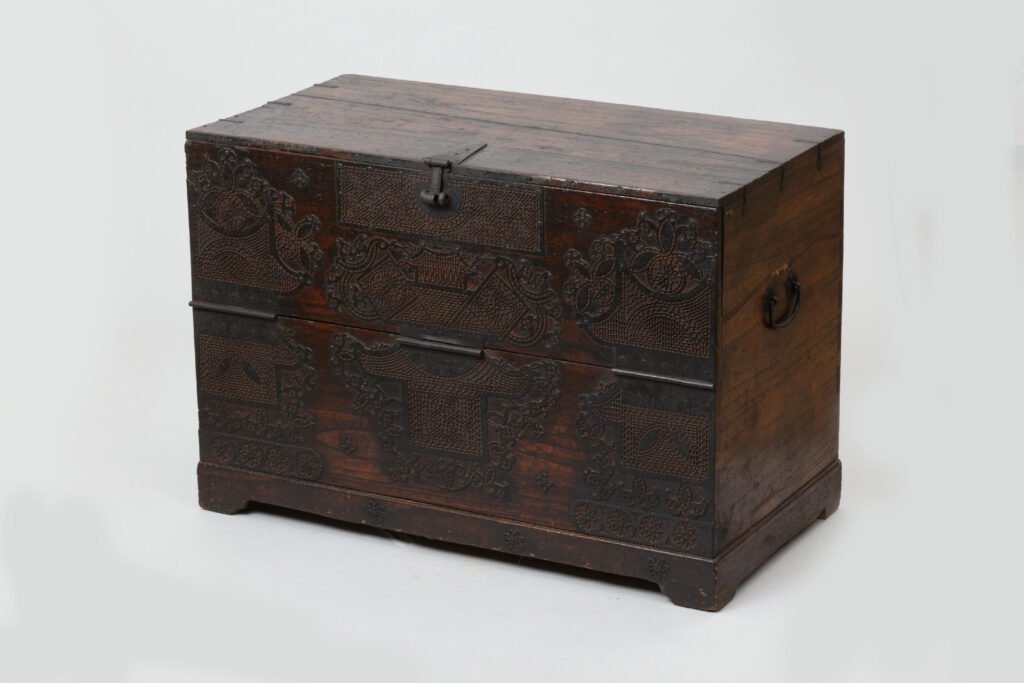


Collection: Seoul Museum of craft art.
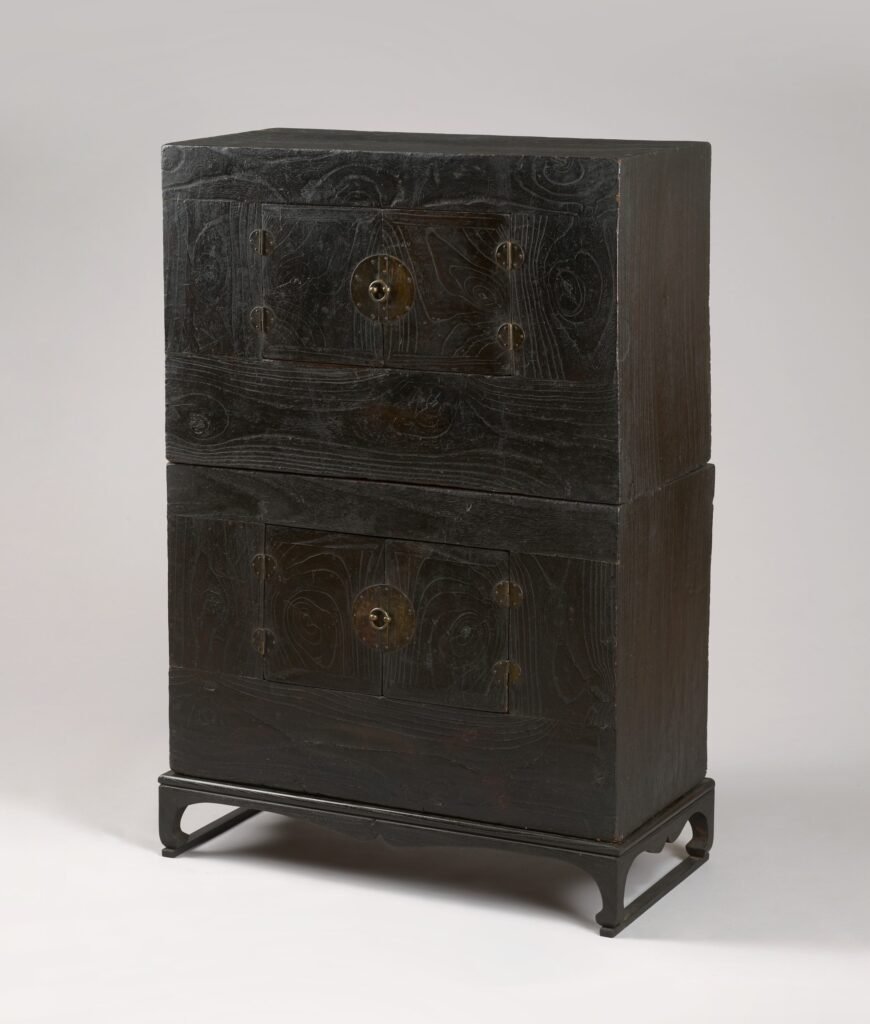
Collection: National Museum of Korea.

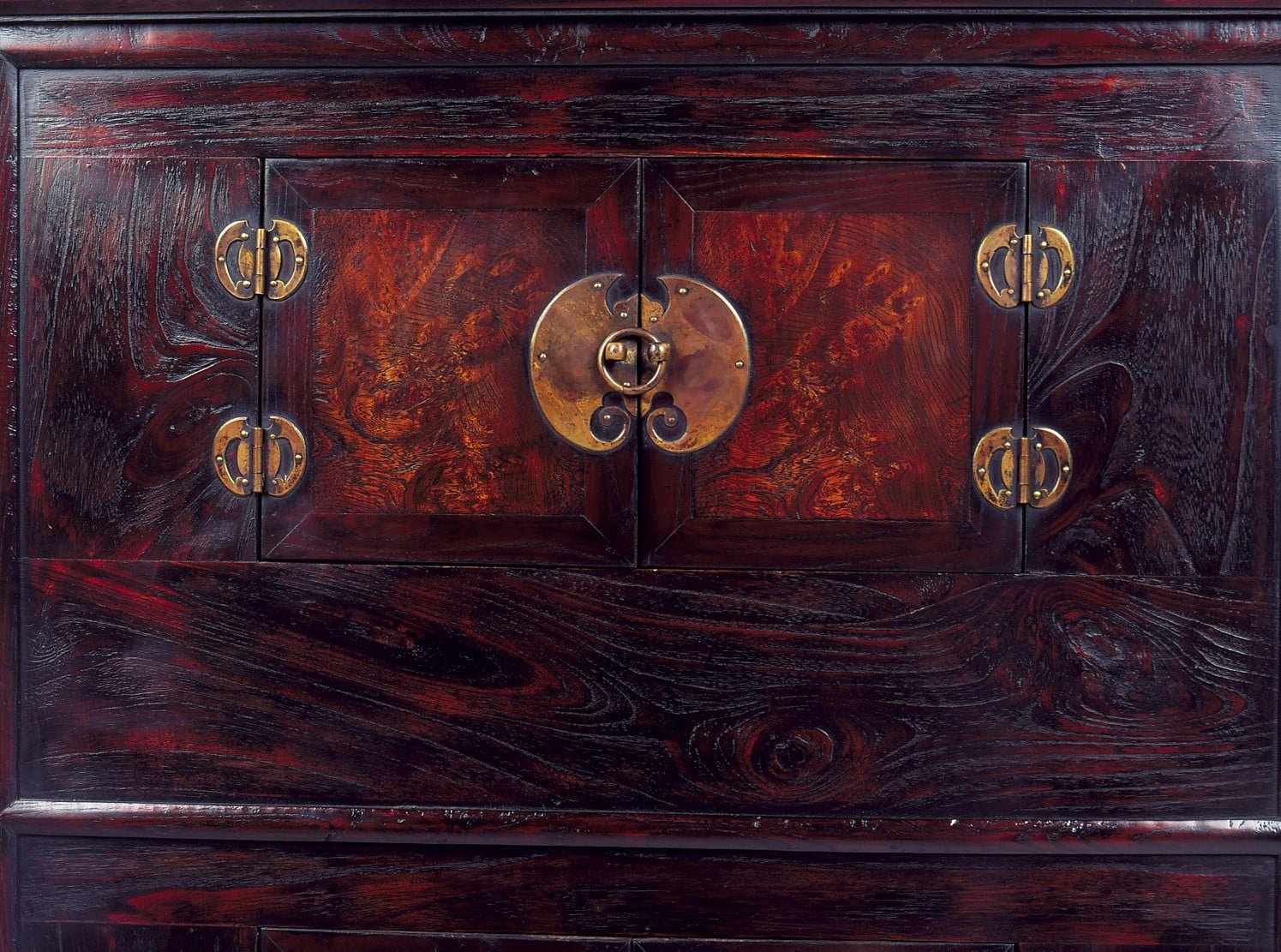
Excellent read. Thanks for the post too!